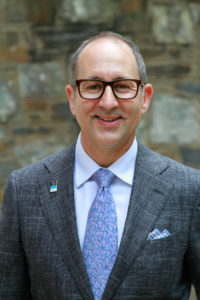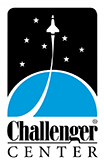Interview: Lance Bush, of Challenger Center

Lance Bush is President and CEO of The Challenger Center for Space Science Education. Challenger Center and its global network of Challenger Learning Centers use space-themed simulated learning and role-playing strategies to help students bring their classroom studies to life and cultivate skills needed for future success, such as problem solving, critical thinking, communication and teamwork.
A portion of the proceeds from the NaNoWriMo Writing Tools bundle goes directly to benefit the Challenger Center. This bundle, put together by Kevin J. Anderson, is an impressive collection of a dozen books on writing that will be inspirational, helpful, maybe even provocative. You can get all of the books for as little as $15. This bundle is only available through the end of November 2018, but you can always donate directly to the Challenger Center!
Meet Lance!
Lance Bush started his career at NASA as one of the chief engineers designing the next generation space transportation. He managed the International Space Station Commercial Development program. He also co-founded and served as the Chairman of the International Space Station Multilateral Commercialization Group comprised of the five partner space agencies (Canada, Europe, Japan, Russia, and the United States) and 16 countries. He has led the growth and expansion of Challenger Center, including the development of a simulation-based program that can be delivered in the classroom. Under Dr. Bush’s leadership, Challenger Center was recognized with the National Science Board’s Public Service Award for its work to promote a public understanding of science and engineering.
The Interview
While I see that you have programs for all ages, your focus has been on middle schoolers. Why did you choose to focus on that age group?
Middle school is a crucial moment in people’s lives. In middle school, approximately half of students decide not to pursue a math or science-related career path. We have success in engaging students in programs that bring science and math to life, igniting their potential and providing inspiration that helps students develop a love of learning and further pursue studies and careers in STEM subjects.
Why does the Challenger Center feel it’s important to have learning centers where kids can interact with hands-on equipment, especially since it would be less expensive not to install special equipment?
A Challenger Learning Center is a place where students from all backgrounds can come together and interact while learning important life skills. Our Centers are not only designed with hands-on simulators that provide an incredible STEM experience, but the Centers also create an environment where students practice critical 21st century skills, like communication, collaboration, and critical thinking.
Your organization has built Challenger Learning Centers not only across the U.S., but across the globe. How does that fit in with your mission?
Our mission is to ignite the potential within every student possible. We want to open their eyes to new skills and ideas that can prepare them for success in their careers and lives. Our Centers across the globe help us to reach these goals. We have already reached over 5 million students over the last 32 years and we look forward to reaching many more in the future.
You are developing a series of Classroom Adventures that use a “simulation-based” learning model. What does that mean when you are in a regular classroom rather than one of your fully equipped learning centers?
We understand that not every student can visit a Challenger Learning Center, that’s why we have developed Classroom Adventures. We want to bring the essence of a Center Mission to the classroom where teachers can deliver the program. Similar to a Mission at a Challenger Learning Center, Classroom Adventures use simulations that are delivered via a computer and include hands-on labs and activities. The program is designed to accomplish the same thing as a Mission — increase students STEM engagement, career awareness, and 21st century skills. Classroom Adventures can be designed for any age group and any STEM topic.
What kind of feedback do you get from kids? Do they have a clear favorite?
We are currently piloting our first Classroom Adventure – Aquatic Investigators — and the students love it! They get to work together with their fellow classmates to help save the Hawaiian Monk Seals.
In a similar vein, what do teachers say about the programs?
We’ve worked with over 2,000 students and their teachers rated student engagement at 4.73 out of 5, and 87% of the teachers wanted the chance to continue using the program. Both Center Missions and Classroom Adventures are effective and provide options for students and teachers to experience engaging STEM subjects in the classroom. Challenger Center programs expose students to a variety of careers, real-world experiences, and skills — teachers love that!
Christa McAuliffe, who would have been the first teacher in space, was a high school Social Studies teacher. A more obvious choice might have been a science teacher, especially since she was selected from more than 11,000 applicants. How do you think she stood out from the crowd? What were her greatest strengths as a teacher?
I believe Christa stood out because she had a great passion for teaching and I believe that’s the greatest strength any teacher can have. Christa wanted to share her lessons with students around the world; she understood the importance of STEM subjects, discovery, and exploration. These too were characteristics shared with other applicants and her backup, Barbara Morgan, who later flew as the first Educator Astronaut. Barbara Morgan helped create Challenger Center and serves as our Chair of the Education Committee on our Board of Directors.
The Challenger Center is now sharing the “lost lessons” that she developed and had planned to teach while on the mission. How have those lessons been received?
The lessons have been well received not only by students and educators, but also by the public. This was a great tribute to Christa and the crew and it came to life when two NASA Educators Astronaut, Ricky Arnold and Joe Acaba, asked Challenger Center if they could complete Christa’s Lessons. It was tremendous teamwork and after nearly 33 years, we are fortunate to complete and share Christa’s lessons and to continue the legacy of the Challenger STS-51L crew.
There have always been those who argue that we need to focus on the problems we face here on earth first, before we pursue space exploration. How would you respond to that particular view?
Space exploration can help us solve some of the problems we face here on Earth. Thanks to space exploration, scientist and engineers have developed new technology and research. Most importantly, space exploration promotes science education. The Apollo Missions inspired my generation to grow up and become scientist and astronauts – the Apollo Effect. Not everyone ended up working in the space program, and many went on to solve other issues in areas like transportation, food development, energy production, and so much more. A Mars mission will inspire a whole new generation of STEM professionals.
Is there anything I haven’t asked about that you feel is important for folks to know about the Challenger Center and your mission?
Today’s students are tomorrow’s innovators and it’s crucial they don’t lose interest in STEM subjects. That’s why our Center Missions and Classroom Adventures are developed to build students’ confidence in their own abilities and demonstrate the power of teamwork. We want to spark a passion for learning that will last a lifetime.


